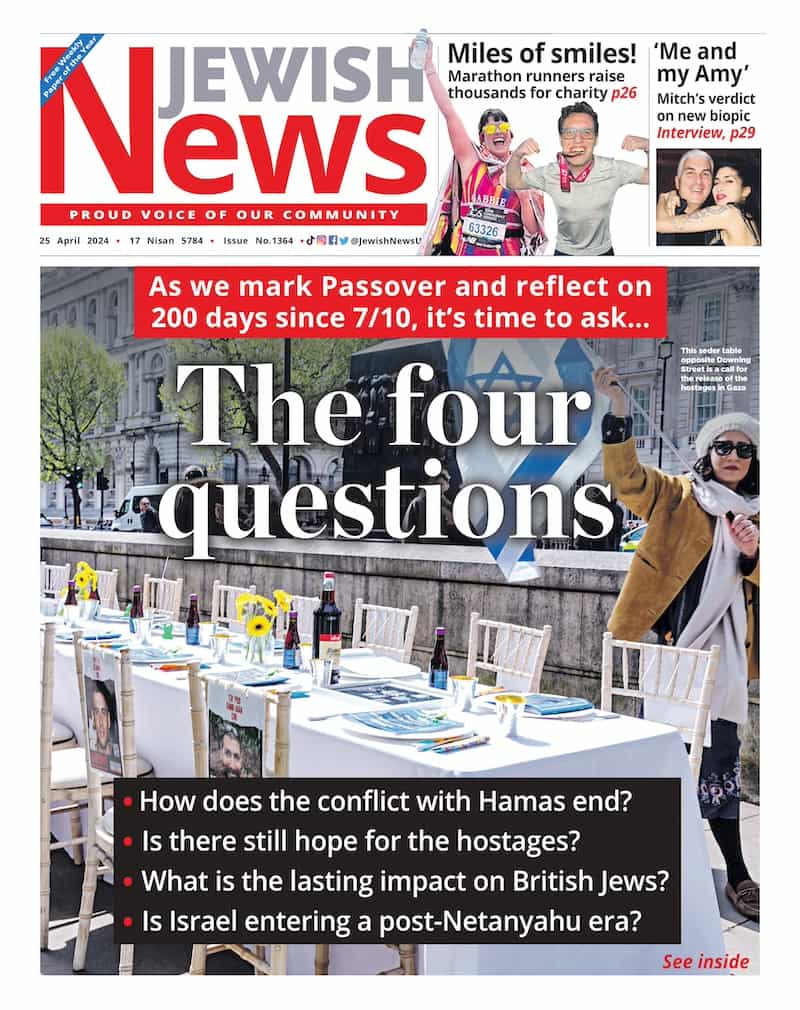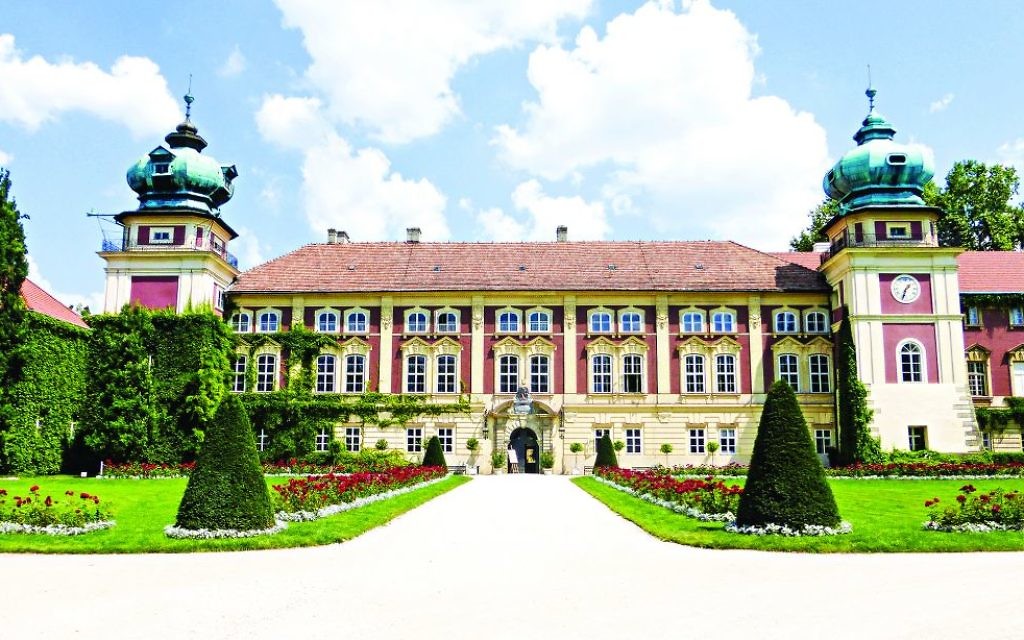On the trail of history in Poland
Natasha Blair goes on a search for her roots and uncovers a part of Poland filled with Jewish heritage
Before the Second World War, around 120,000 Jews lived in the south-eastern part of Poland in the Podkarpackie region, bordering Slovakia and Ukraine.
Sadly, there are now very few Jewish inhabitants, but evidence of their once-burgeoning existence can be seen everywhere.
I travelled to Rzeszów, the capital of the region, by Ryanair to begin my
exploration and found in a small park behind the main square a monumental sculpture, The Transgression, by Josef Szajna, which marks the place where the Jewish ghetto used to be.
Get The Jewish News Daily Edition by email and never miss our top stories Free Sign Up
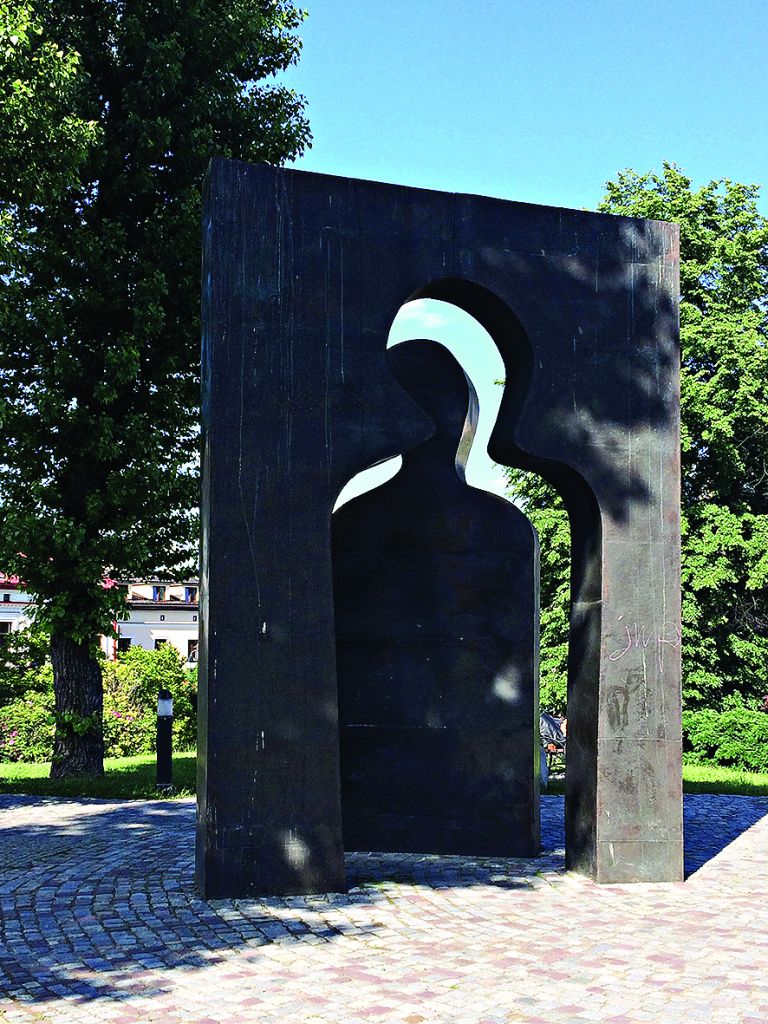
There are three buildings all near to one another that used to be synagogues. One of them, dating from the 17th century, has been renovated and is now the city’s art gallery.
By its side, a grassed park with trees marks the site of a Jewish cemetery.
A large stone bears a plaque commemorating the fact the gravestones were removed during the Communist era to pave the local roads.
Many Polish families hid Jewish people during the events of 1939-45, and their memorial is tucked away in the tiny village of Marowa.
This is the site of the Ulma Family Museum of Poles Saving Jews in World War Two, which opened in March complete with a monument dedicated to Holocaust victims, while nameplates fixed to the pavement and a wall of remembrance commemorate the many Poles who took part in the campaign help to save Jewish lives.
Inside, the displays include memorabilia from Józef and Wiktoria Ulma, after whom the museum is named and who ultimately lost their lives for providing shelter to eight Jews.
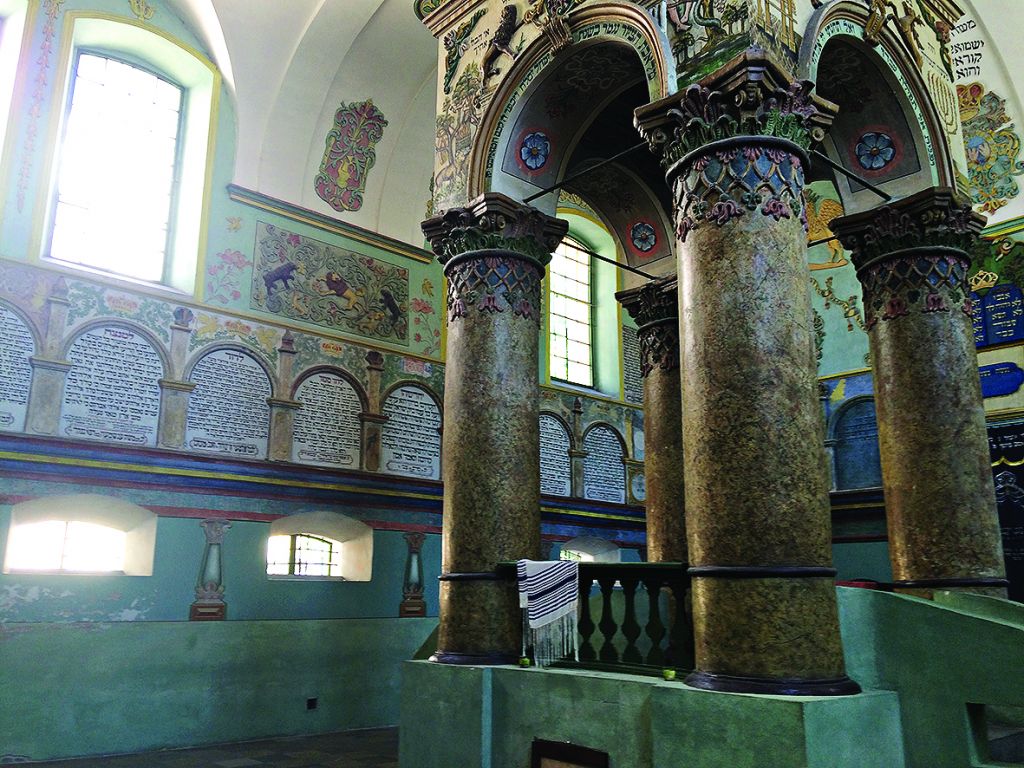
The Ulmas were posthumously named in 1995 as ‘Righteous Among the Nations’.
At one time or another, every town in Poland had a castle. A particularly fine example is at Lancut, whose 17th century fortress has been left largely unscathed by war.
Inside the entrance is a large menorah, a gift from the local Jewish community, while the interior is furnished with original items and feels as if people are still living there.
Like all visitors, we had to cover our shoes to protect the parquet floors, the marquetry of which was different in each room. Another particularly impressive feature was the library, with thousands of leather-bound books lining its shelves.
Although there are no Jews left in Lancut, the Chassidic synagogue built in 1761 has been preserved. It is looked after by Miroslaw Kedzior, who is not Jewish but says he feels an affiliation to the Jewish community.
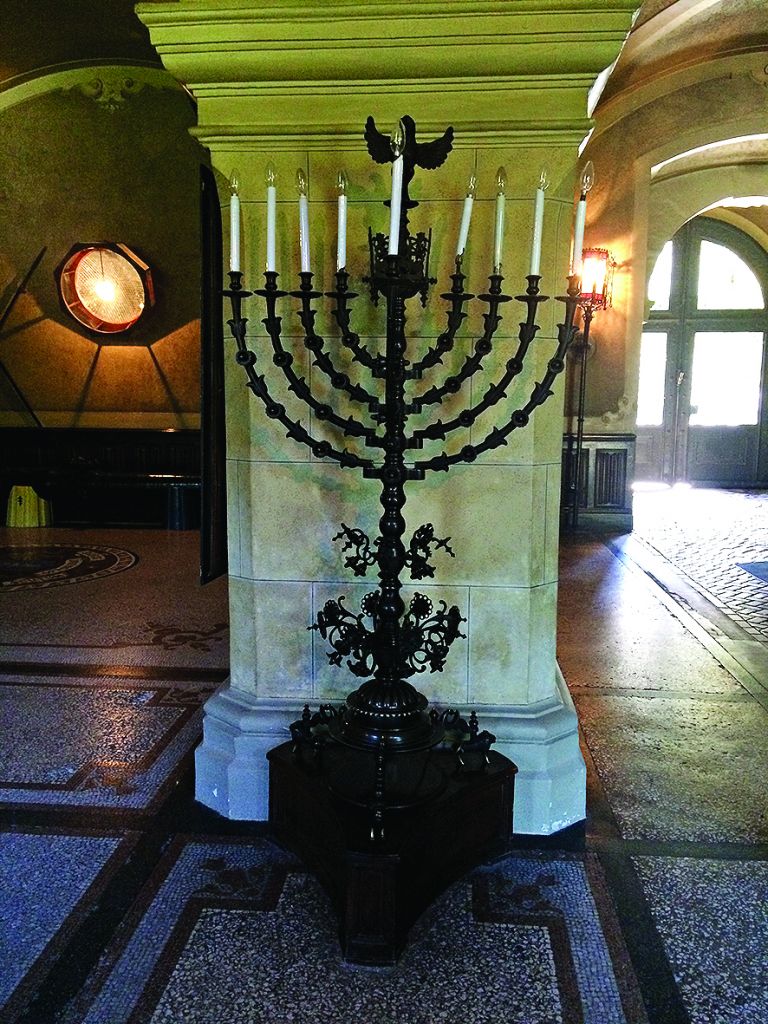
The synagogue doesn’t look anything special from the outside, but inside is a different story as visitors are confronted by a Baroque interior.
One of the most important tzadiks of Chasidism, Jacob Isaac Horowitz, had a room here where he prayed, studied and had discussions with other Chasidim. His room is maintained together with some of the broken pieces of gravestones that have been rescued.
Lancut’s synagogue forms part of the Chassidic Route, a tourist trail that takes visitors in the footsteps of the Jewish communities that were once found through south-eastern Poland.
Twenty-nine communities are involved in the project, which is another of the ways in which the Jewish history of the country is being preserved.
Our next destination was reached via a new type of bicycle that seats four people, with two cycling and two sitting behind, that travels along an old disused railway line.
Along the track, I cycled the two kilometers needed to reach the brewery of URSA Maior, which specialises in unpasteurised beers.
Rejwach na Kazimierzu, a beer made for their pub in Kazimerz, the Jewish quarter of Kraków, has a label which has been designed to look as if the words are written in Hebrew.
Our next stop was Sanok, where the open-air Museum of Folk Architecture has more than 150 wooden buildings dating from the 17th to 20th centuries. A minimum of two-and-a-half hours is needed to appreciate this interesting venue fully.
A Galician market square with the interiors of the houses and shops recreated to look like those from the turn of the 19th century has been established and includes two Jewish houses.
Another feature, an 18th century-style synagogue, is also currently under construction.
Natasha’s contacts
Natasha travelled from Liverpool Street station to Stansted via Stansted Express:
www.stanstedexpress.co.uk
Ryanair flies into Rzeszów from Stansted Airport: www.ryanair.com
Natasha used Polish guide Pawel Pasztyla: Email ppasztyla@gmail.com
Podkarpackie Tourism:
www.podkarpackie.travel
The Ulma Family Museum of Poles Saving Jews in World War Two:
www.ulmamuseum.org
Foundation for the Preservation of Jewish Heritage In Poland: http://fodz.pl
Ursa Maior Brewery: www.ursamaior.pl

Thank you for helping to make Jewish News the leading source of news and opinion for the UK Jewish community. Today we're asking for your invaluable help to continue putting our community first in everything we do.
For as little as £5 a month you can help sustain the vital work we do in celebrating and standing up for Jewish life in Britain.
Jewish News holds our community together and keeps us connected. Like a synagogue, it’s where people turn to feel part of something bigger. It also proudly shows the rest of Britain the vibrancy and rich culture of modern Jewish life.
You can make a quick and easy one-off or monthly contribution of £5, £10, £20 or any other sum you’re comfortable with.
100% of your donation will help us continue celebrating our community, in all its dynamic diversity...
Engaging
Being a community platform means so much more than producing a newspaper and website. One of our proudest roles is media partnering with our invaluable charities to amplify the outstanding work they do to help us all.
Celebrating
There’s no shortage of oys in the world but Jewish News takes every opportunity to celebrate the joys too, through projects like Night of Heroes, 40 Under 40 and other compelling countdowns that make the community kvell with pride.
Pioneering
In the first collaboration between media outlets from different faiths, Jewish News worked with British Muslim TV and Church Times to produce a list of young activists leading the way on interfaith understanding.
Campaigning
Royal Mail issued a stamp honouring Holocaust hero Sir Nicholas Winton after a Jewish News campaign attracted more than 100,000 backers. Jewish Newsalso produces special editions of the paper highlighting pressing issues including mental health and Holocaust remembrance.
Easy access
In an age when news is readily accessible, Jewish News provides high-quality content free online and offline, removing any financial barriers to connecting people.
Voice of our community to wider society
The Jewish News team regularly appears on TV, radio and on the pages of the national press to comment on stories about the Jewish community. Easy access to the paper on the streets of London also means Jewish News provides an invaluable window into the community for the country at large.
We hope you agree all this is worth preserving.
- Features
- Podkarpackie
- Poland
- Jewish-Polish history
- Polish-Jewish history
- Josef Szajna
- Ryanair
- Jewish ghetto
- Marowa
- Ulma Family Museum of Poles Saving Jews in World War Two
- Holocaust victims
- Józef and Wiktoria Ulma
- Righteous Among the Nations
- Chassidic
- Lancut
- Jacob Isaac Horowitz
- Chassidic Route
- URSA Maior
- Foundation for the Preservation of Jewish Heritage In Poland:
- Ursa Maior Brewery
- Travel
- History
- Kosher Culture
- Culture & Lifestyle
-
By Brigit Grant
-
By Laurent Vaughan - Senior Associate (Bishop & Sewell Solicitors)
-
By Laurent Vaughan - Senior Associate (Bishop & Sewell Solicitors)
-
By Laurent Vaughan - Senior Associate (Bishop & Sewell Solicitors)
-
By Laurent Vaughan - Senior Associate (Bishop & Sewell Solicitors)

